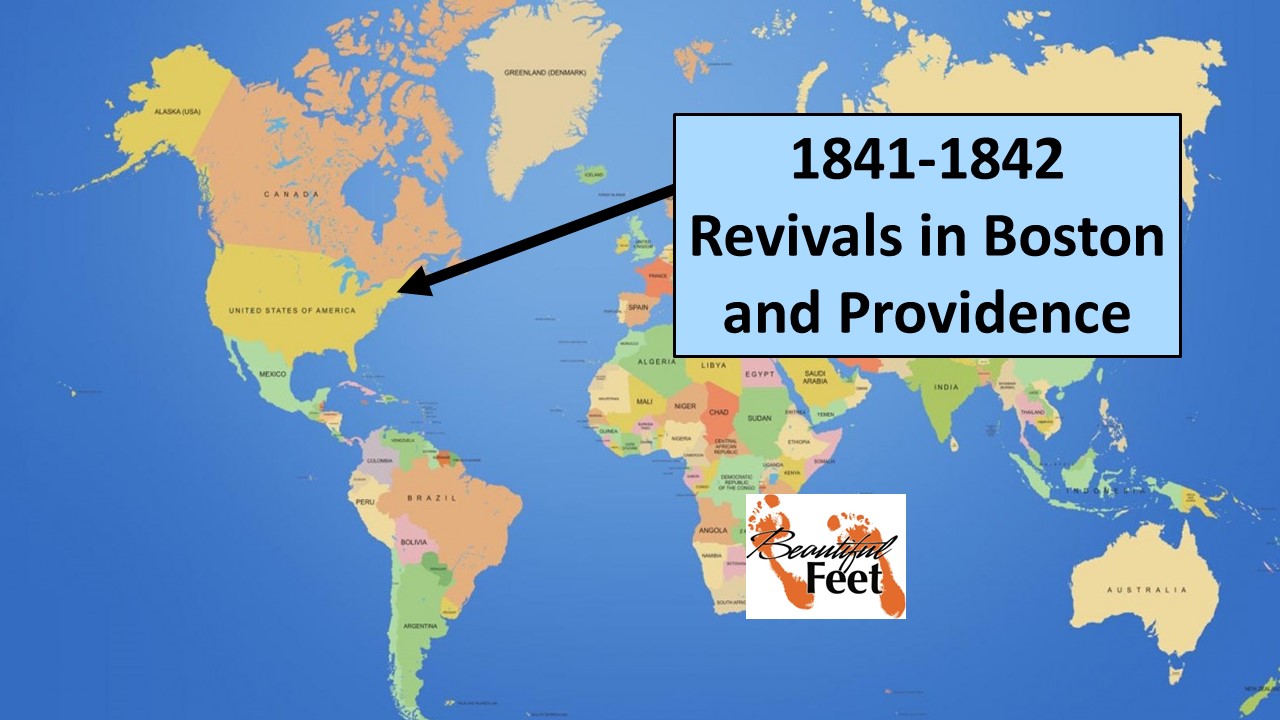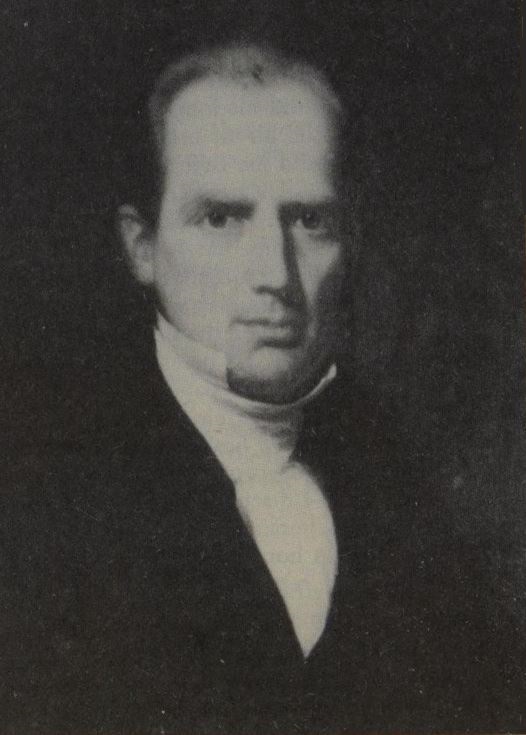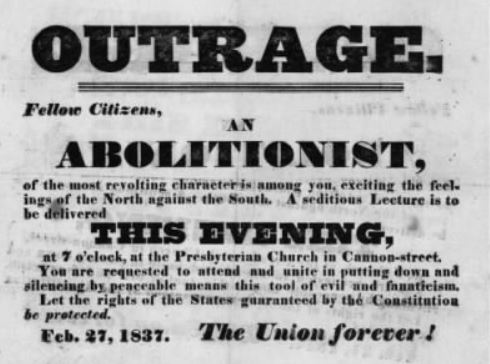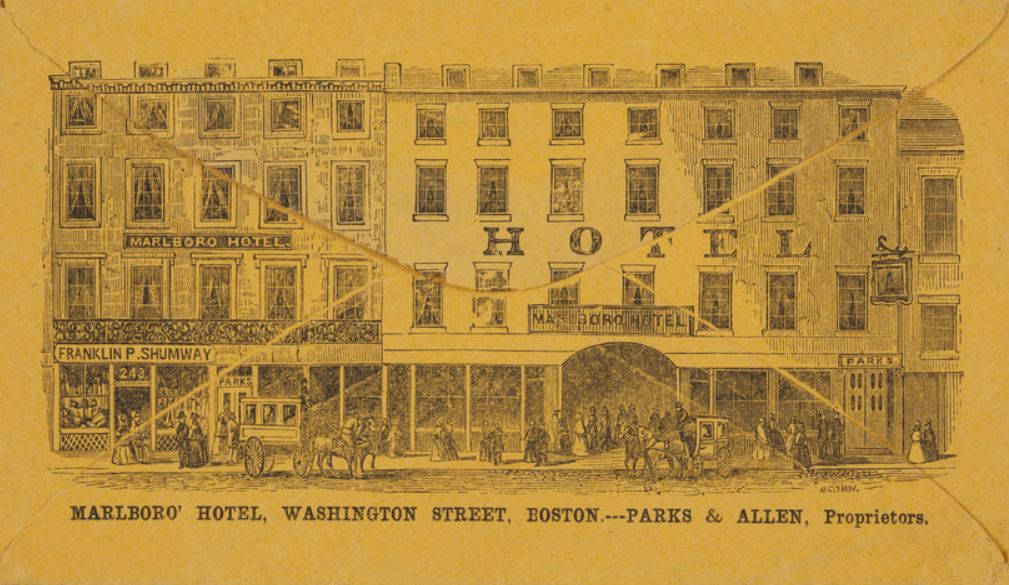1841-1842 Boston & Providence Revivals



Charles Grandison Finney – Father of modern revivalism and the leading figure of the Second Great Awakening
Introduction
Charles G. Finney’s (1792-1875) unique methods of evangelism earned him the title of the “father of modern revivalism.” His methods paved the way for other mass-evangelists, like Dwight L. Moody, R. A. Torrey, John W. Chapman, Billy Sunday, and Billy Graham, who adapted and built upon Finney’s methods.
Background Information
With this revival account being one in a sequence of revivals during the life of Charles G. Finney, we recommend reading them in chronological order:
► 1824 Evans Mills German Settlement Revival
► 1824 Antwerp, New York Revival
► 1824 Revival at Perch River and Other Locations
► 1825 Revival in Gouverneur, New York
► 1825 Revival in De Kalb, New York
► 1825 Revival in Western, New York
► 1825 Revival in Rome, New York
► 1826 Revival in Utica, New York
► 1826 Revival in Auburn, New York
► 1826-1827 Revival in Troy, New York
► 1827 New Lebanon & Stephentown Revivals
► 1827-1829 Revival at Wilmington and Philadelphia
► 1829 Reading, Pennsylvania Revival
► 1829 Lancaster, Pennsylvania Revival
► 1829 Columbia, New York Revival
► 1830 New York City Revival
► 1830-1831 Rochester, New York Revival
► 1831 Revivals in Auburn, Buffalo, Providence, & Boston
► 1832 New York City Revival
► 1835-1840 Revivals in Oberlin, Ohio
From Oberlin to Boston
In 1835 Charles Finney was invited to become the Professor of Theology at Oberlin Collegiate Institute in Oberlin, Ohio. He accepted that position part-time, by pastoring his church in New York City in the summers and teaching in Oberlin in the winters. In 1837 he resigned from his church and moved to Oberlin.
Gender and Racial Conditions at Oberlin
One of the stipulations Finney made for becoming the Professor of Theology at Oberlin was that blacks and whites, as well as women, would all be invited to attend the college. This then became the first college in the USA to take a step toward removing gender and racial prejudices.
Evidence of Openness:
► Boarded blacks in homes of faculty members.
► Blacks were allowed to sit with the faculty members at their tables in the hall.
► Whether preaching or teaching, blacks sat where they wished, and “prejudice against color soon subsided.”
► Years later there was hardly any awareness of the difference.
► In 1867, the number of students reached 1,134, with 494 being women.

1837 Leaflet promoting a meeting at a church
for discussion on abolition
Opposition to the Anti-Slave Movement
The opposition to the anti-slave movement in Boston was strong:
► Churches forbid the use of their facilities to conduct prayer meetings for the enslaved.
► Churches forbid the use of their buildings for open discussion to be held about slavery.

Envelope, with a picture of the Marlboro Hotel. This was the location where the Free Congregational Church held their meetings. It was also where Charles G. Finney ministered while in Boston.
With the churches being opposed to the anti-slave movement, one businessman purchased the Marlboro Hotel, and after renovations were completed in 1837, it was opened up as a church that would seat 2,500 people.

Finney in Boston
Finney was invited to come and minister at the Marlboro Hotel (Marlborough Chapel) for a few months. He accepted the invitation and left Oberlin in October 1841. Immediately upon his arrival in Boston, Finney stated:
The Spirit of the Lord was immediately poured out, and there became a general agitation among the dry bones.
In his hotel room, Finney was visited continually, every day of the week, by those seeking salvation, and he commented on what he witnessed taking place:
This was the time of the great revival in Boston. It progressed wonderfully, especially among the Baptists, and more or less throughout the city… the work was very extensive.
More of that spreading movement can be read with the 1842 Boston Revival.
From Boston to Providence
After two months in Boston, Finney traveled to Providence, Rhode Island, and upon his arrival, the revival began immediately and grew in intensity every day, with many being converted.
In the church where he was preaching there was a large basement that was used by the Sunday School. The number of converts at the end of services, who would stay behind to receive further directions concerning their decision to follow Christ, were asked to go to that room, and according to Finney:
From night to night after preaching that room would be filled with rejoicing young converts and trembling, inquiring, anxious sinners. This state of things continued for two months.
Return to Oberlin
After two months of ministering in Providence, as well as two months previously in Boston, and being near the start of the spring term in Oberlin, Finney left Providence around the first of February 1842 to return to Oberlin, passing through Boston on his homeward journey.
Results of the Revival in Boston
► According to the Baptist revivalist that had been preaching in Boston, Elder Jacob Knapp, there were 2,000 people added to the Baptist churches alone.
► Martin Moore indicated that more than 4,000 joined Boston churches in 1842.
► Hundreds were added to churches of other denominations.
► Many from outside the city, coming to the revival from the surrounding countryside, were also converted.
One man wrote of this Boston revival with these words:
We never had so interesting a time in Boston as the present in regard to religion… All the Churches of all the evangelical denominations are crowded and so general [a] feeling of interest & awakening was never known before. Bro. Finney’s labours contributed greatly to this glorious result.
Results of the Revival in Providence
The basement of the church Finney was preaching in was typically used to give counsel to new converts at the end of each service. In a letter dated January 31, 1842, we read about the number that were coming to Christ on a regular basis:
The whole church at the last accounts, was filled by enquirers, instead of the basement, as has always been usual. 200 at a time came forward to be prayed for.
The liberal Universalists were filled with fear and dismay because many of the people from those congregations were getting saved and leaving those churches.
Finney Revival Account List
Access all accounts of Finney’s revivals using this link.
Primary Sources
► Autobiography of Elder Jacob Knapp by Jacob Knapp
► Boston Revival 1842 by Martin Moore
► Chapter XXV (Boston & Providence Revivals) Matters at Oberlin: The Memoirs of Charles G. Finney by Charles G. Finney
► The Memoirs of Charles G. Finney: The Complete Restored Text by Charles G. Finney
Secondary Sources
► Charles G. Finney by Wikipedia
► Charles Grandison Finney & the Second Phase of the Second Great Awakening by Christian History Institute
► Great Revivals and the Great Republic by Warren Candler
► Lectures on Revivals of Religion by Charles G. Finney
► Man of Like Passions: The Life Story of Charles Grandison Finney by Richard E. Day
► Memoirs of Revivals of Religion by Charles G. Finney
► Lectures on Systematic Theology by Charles G. Finney
Return to List of Revival Stories
Chet & Phyllis Swearingen:
Office: (260) 920-8248
romans1015@outlook.com
Beautiful Feet
P.O. Box 915
Auburn, IN 46706

